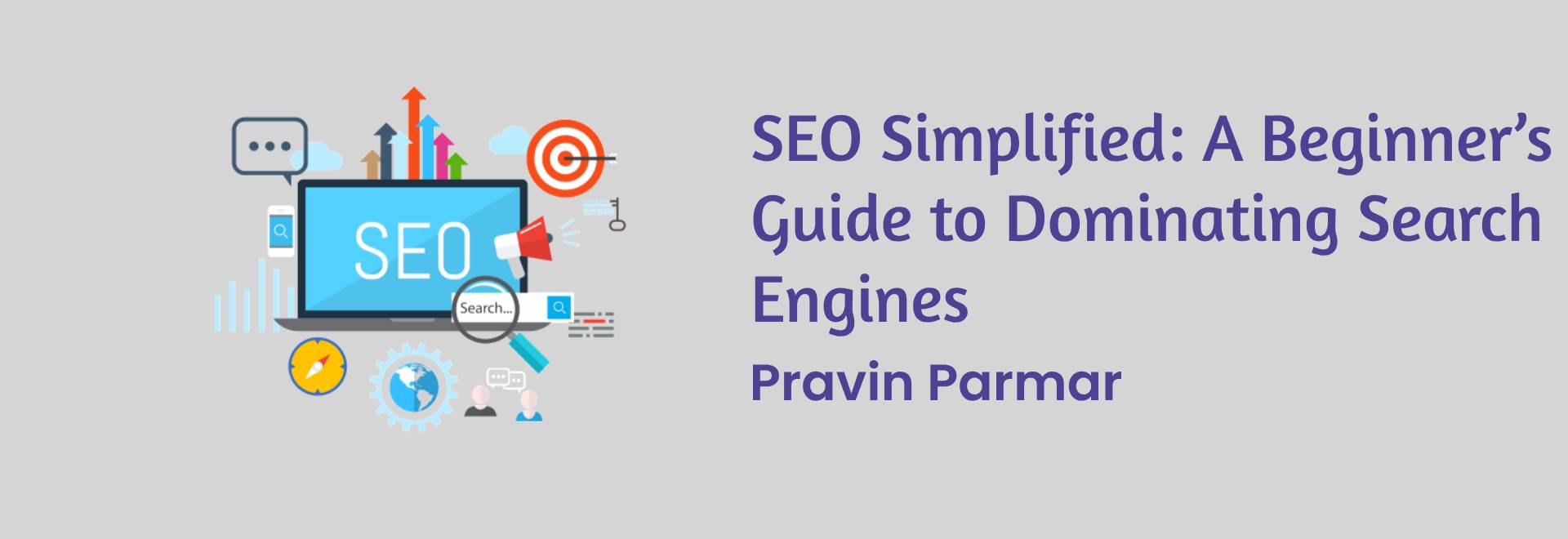
Search engine optimization (SEO) is which matters for your online visibility and success, in the vast internet landscape, hosting millions of urging websites. Whether you’re running a personal blog, an e-commerce store, or a corporate website, understanding and implementing SEO techniques is crucial for driving organic traffic and reaching your target audience.
This beginner’s guide aims to demystify SEO , breaking down its core concepts, strategies, and best practices into digestible chunks. By the end of this guide, you’ll have a solid foundation to kickstart your SEO journey and propel your website towards higher rankings on search engine results pages (SERPs).
Table of Contents
ToggleUnderstanding the Basics of SEO
Key components of SEO include:
On-Page Optimization: This involves optimizing individual web pages to rank higher and earn more relevant traffic. On-page factors include keyword optimization, high-quality content creation, meta tags, headings, and internal linking.
Off-Page Optimization: Off-page SEO focuses on improving the perception of your website’s authority, relevance, and popularity by acquiring backlinks from other reputable websites. Link building, social media engagement, and influencer outreach are common off-page tactics.
Technical SEO : Technical SEO addresses the backend aspects of your website, ensuring that it is optimized for search engine crawlers. This includes site speed optimization, mobile-friendliness, HTTPS security, XML sitemaps, and proper URL structures.
Content Marketing: Content lies at the heart of SEO. Creating valuable, informative, and engaging content not only attracts visitors but also earns backlinks and improves your site’s authority. Content marketing encompasses blog posts, articles, videos, infographics, and more.
Keyword Research and Analysis
Keywords are the foundation of SEO, as they represent the phrases users type into search engines when seeking information. Effective keyword research involves identifying the terms and phrases your target audience is likely to use and strategically incorporating them into your content.
Tools like Google Keyword Planner, SEMrush, and Ahrefs can help you discover relevant keywords, analyze their search volume and competition, and uncover related terms. Aim for a mix of high-volume, competitive keywords and long-tail keywords, which are longer, more specific phrases with lower search volume but higher intent.
Content Creation and Optimization
Once you’ve identified your target keywords, it’s time to create high-quality content that satisfies user intent and provides value. Each piece of content should be well-written, comprehensive, and optimized around a specific keyword or topic.
When optimizing your content, pay attention to:
Title Tags: Include your target keyword in the title tag, which appears as the clickable headline in search engine results.
Meta Descriptions: Craft compelling meta descriptions that summarize your content and entice users to click through to your website.
Header Tags: Use header tags (H1, H2, H3, etc.) to structure your content and include relevant keywords where appropriate.
Keyword Density: Avoid keyword stuffing, but ensure that your target keywords appear naturally throughout your content.
Additionally, optimize your images with descriptive filenames and alt text, as search engines can’t “see” images but rely on these attributes for context.
On-Page Optimization Techniques
Implement Robust Security Measures:
In addition to content optimization, there are several On-page SEO techniques you can implement to improve your website’s visibility:
Internal Linking: Link relevant pages within your website to each other using descriptive anchor text. This helps search engines understand the structure of your site and distributes link equity throughout your pages.
Page Speed Optimization: Optimize your website’s loading speed by minimizing HTTP requests, enabling browser caching, compressing images, and leveraging browser caching.
Mobile-Friendly Design: With the increasing prevalence of mobile devices, it’s essential to ensure that your website is optimized for mobile users. This is my recommendation. The best approach is to adopt design ideas that respond to different screen sizes and capabilities.
Off-Page SEO Strategies
Here are some effective off-page SEO strategies:
Guest Blogging: Write high-quality guest posts for reputable websites in your niche, including a backlink to your site within the content or author bio.
Social Media Engagement: Build a strong presence on social media platforms and share your content to attract engagement, shares, and backlinks.
Influencer Outreach: Collaborate with influencers and industry experts to amplify your content reach and earn backlinks from their networks.
Measuring SEO Success
Organic Traffic: Measure the volume of visitors coming to your site from organic search results.
Keyword Rankings: Track the rankings of your target keywords over time to gauge visibility and progress.
Backlink Profile: Monitor the quantity and quality of backlinks pointing to your site.
Conversion Rate: Analyze the percentage of visitors who take desired actions on your site, such as making a purchase or filling out a contact form.
Tools like Google Analytics, Google Search Console, and third-party SEO platforms provide valuable insights into these metrics, allowing you to make data-driven decisions and optimize your SEO strategy accordingly.
Conclusion
SEO is a multifaceted discipline that requires ongoing effort, patience, and adaptation to stay ahead of the curve. While this beginner’s guide provides a solid foundation, there’s always more to learn and explore in the ever-evolving world of search engine optimization. By understanding the basics of SEO, conducting thorough keyword research, creating high-quality content, and implementing on-page and off-page optimization techniques, you’ll be well-equipped to enhance your website’s visibility, attract organic traffic, and achieve your online goals. Remember, SEO success doesn’t happen overnight, but with persistence and dedication, you can climb the ranks and dominate the search engine results pages. I am Pravin Parmar and I am a WordPress Developer who builds custom themes, plugins, and client websites. Let’s talk with me.